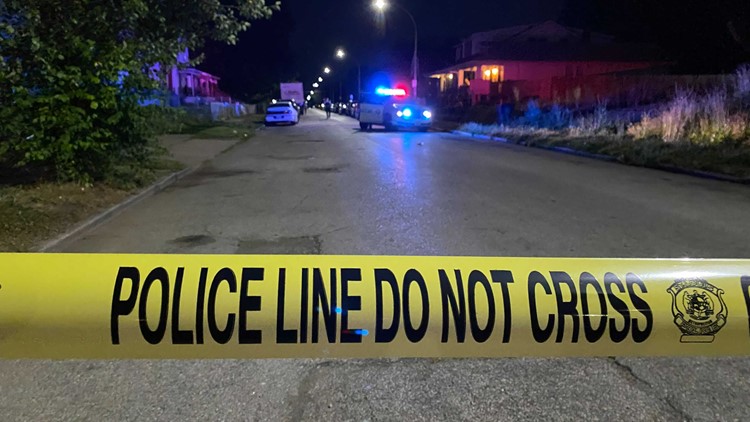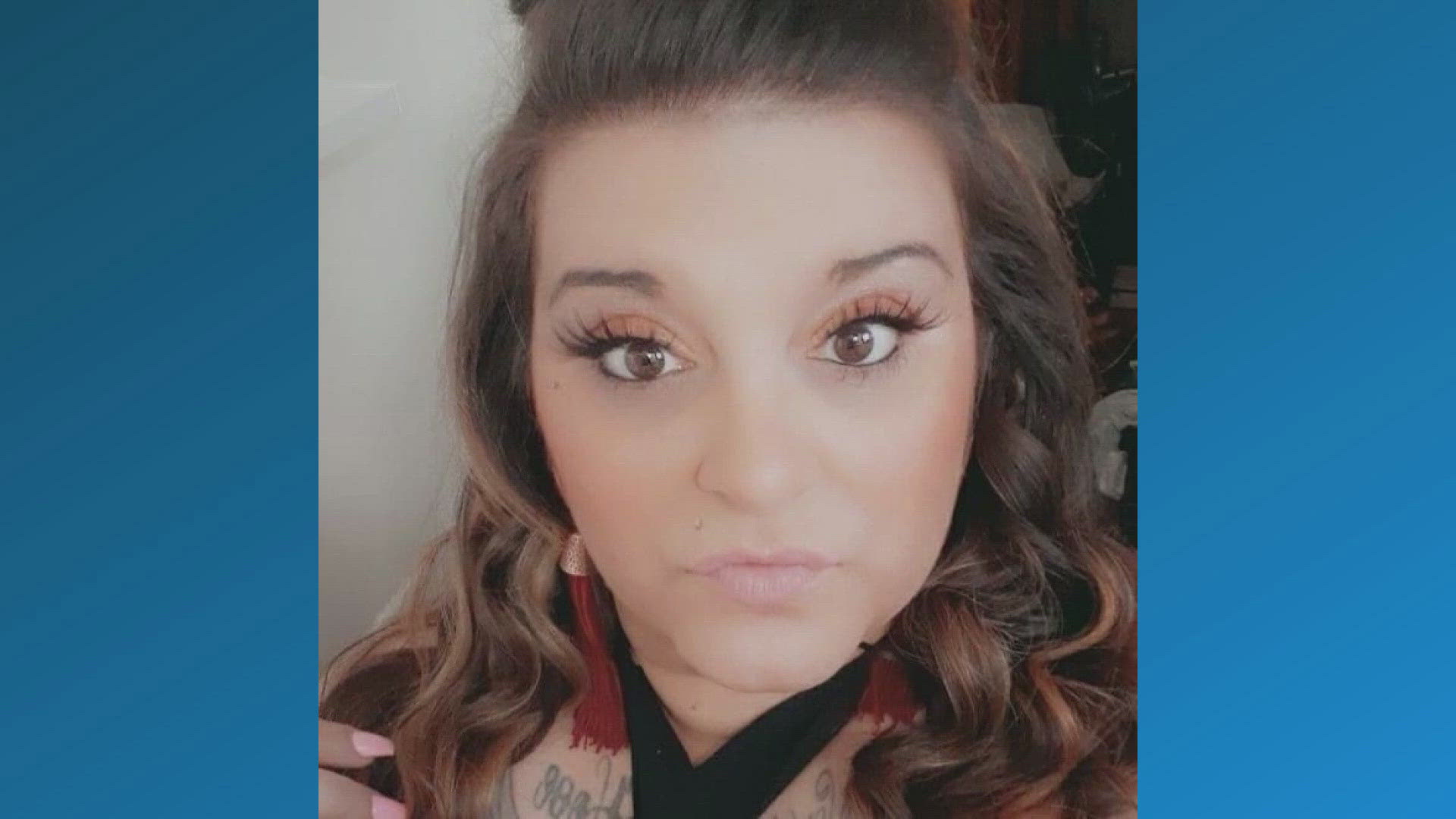ST. LOUIS — The rise in the number of kids dead or injured by gun violence is alarming. It's a nationwide epidemic that is sweeping through the St. Louis region.
According to the Centers for Disease Control and Prevention, 116 children and teens die by guns every year in Missouri, and about 60% of those deaths are homicides.
5 On Your Side reached out to local law enforcement, children’s health professionals and other officials to find answers to this issue.
In response to our media inquiry, the St. Louis Metropolitan Police Department searched its records for gun-related incidents and provided an estimate of how many children were involved in each.
The first search was for incidents involving victims aged 17 and younger who have been listed with an injury type of “shot-major injury” or “shot-minor injury.”
The second way they searched is by incidents involving victims aged 17 and younger with a Uniform Crime Reporting program. This program divides offense type into groups, such as murder and non-negligent manslaughter, negligent manslaughter and justifiable homicide.
“In both cases, we then manually reviewed the responsive incident reports to determine if the victim was in fact shot and if the victim survived or was fatally shot,” a spokesperson for the department said.
According to the department, 10 children were identified as being fatally shot and 51 were identified as being shot and surviving..
The department said that based on the search methodology described above, it is possible that additional children have been wounded and killed by gunfire.
5 On Your Side created a map displaying locations of shootings involving children in 2022 according to the Gun Violence Archive. To view it, click here.
Gun violence and self-defense
One major factor in why kids get shot or injured in the city is people who carry guns for protection.
Christopher Sullivan, an E. Desmond Lee professor of youth crime and violence and chair of the department of criminology and criminal justice at the University of Missouri-St. Louis, said gun violence in the U.S. takes on different characteristics across certain settings, such as:
- More density in communities.
- Young male suspects.
- Suburban and rural area incidents.
- Communities with higher crime rates.
“That definitely leads to the conclusion that a need to potentially defend oneself is a driver of weapon-carrying,” Sullivan said.
The desire for protection could not only be outside of the home but also inside of the home. Most times, the weapons are unlocked and unwatched.
Child victims and unlocked guns
Dr. Lindsay Clukies specializes in emergency and pediatric emergency medicine and has an affiliation with the St. Louis Children’s Hospital.
“A large component of families who feel like they need to keep their firearm unlocked because they need to have it in a moment … they’re using it for safety," Clukies said. "There’s no malicious intent. They feel like their firearm is going to keep their family safe.”
However, Clukies said that an unlocked gun in your home raises rates of unintentional and self-inflicted firearm injuries. So, having a gun in the home doesn’t do much for protection.
In 2020, the U.S. saw an increase in first-time gun buyers and people purchasing ammunition.
“People were nervous. People were scared," Clukies said. "There was a lot of economic disrupt. But, we saw a major increase in violence in 2020.”
She said her emergency room saw 150 children shot by firearms that year.
And this year, she said she's seen a child come into the St. Louis Children’s Hospital with a gunshot once every two-to-three days.
“In 2021, it decreased a little bit, but it’s risen in 2022 so far,” Clukies said. “I want people to know that this is a true epidemic.”
Clukies said if children dying at this rate due to an infectious disease, we would be doing much more to stop it. She also said we need to focus on how alarming this is for our youth.
Violence intervention and prevention
Wilford Pinkney Jr., the director of the Office of Violence Prevention for the City of St. Louis said proximity to other individuals in a geographical area is a key factor in gun violence.
If you have people who know each other and see each other on a regular basis, some disagreements will build up over time, she said.
“Now, your level of anger, frustration and annoyance grows,” Pinkney said. “Then, you utilize whatever you have, whatever ways you’ve been socialized to deal with those types of conflicts.”
Pinkney said parents can start early to help reduce violence with children by teaching them:
- How to mediate disputes.
- Communication skills.
- De-escalation tactics.
- Trauma treatment.
- How to release negative emotion.
The City of St. Louis and Mayor Tishaura Jones have used American Rescue Plan Act funds provided under the Biden administration to address gun violence in creative ways, like the Office of Violence Prevention.
The organizations Pinkney and the Office of Violence Prevention work with are focused on providing services to address root causes in 10 different neighborhoods. These services include violence interrupter programs in which people who have had lived experiences themselves and know the harm their behavior can help. They can speak to children to let them know violence is not the best way.
“Because a lot of this behavior becomes the norm,” Pinkney said. “That doesn’t have to become the norm.”
RELATED: 'Too many times': City leaders, neighbors react to another St. Louis child accidentally shot
Gun safety and gunlocks
Lt. Timothy Burger with the Hazelwood Police Department said because shooting incidents involving kids do occur in Hazelwood, the department provides free gunlocks to anyone who wants one.
“At our annual Hazelwood Community Day, we gave away over 100 gunlocks,” Burger said. “We also had officers there talking to residents and guests about how to secure weapons, how to use the locks and ways to keep children safe if they do have a firearm in the home with a child.”
Burger said teaching children what to do if they do encounter a firearm should be a standard, whether it is in their home or somewhere else.
“As you probably already know, the best way to stay safe if you decide to keep a firearm in the home is to limit access to it from young people,” Burger said.
He said if appropriate for the age of the child and family environment, training in the proper and safe handling of firearms is very important.
“These families need to ensure that children in the home know what to do and not do if they encounter a firearm when an adult is not present,” he said.
Burger said the department would want to see firearms put away unloaded and in a secure, locked manner when the firearm’s owner is not in control of the weapon.
“That will be the safest way to keep a weapon stored when children are present," Burger said. "Simply having the weapon out of reach or in a drawer will not stop some children’s curiosity."
To watch 5 On Your Side broadcasts or reports 24/7, 5 On Your Side is always streaming on 5+. Download for free on Roku or Amazon Fire TV.
Resources for children exposed to trauma, violence
The Children's Advocacy Services of Greater St. Louis offers a range of services for families, including a trauma-informed parenting group and short-term interventions immediately following trauma exposure.
St. Louis Children’s Hospital Victim of Violence Program helps “curb the reoccurrence of interpersonal violence in the lives of children who have been shot, stabbed or assaulted, involved in domestic violence and Fit for Confinement evaluations.”



